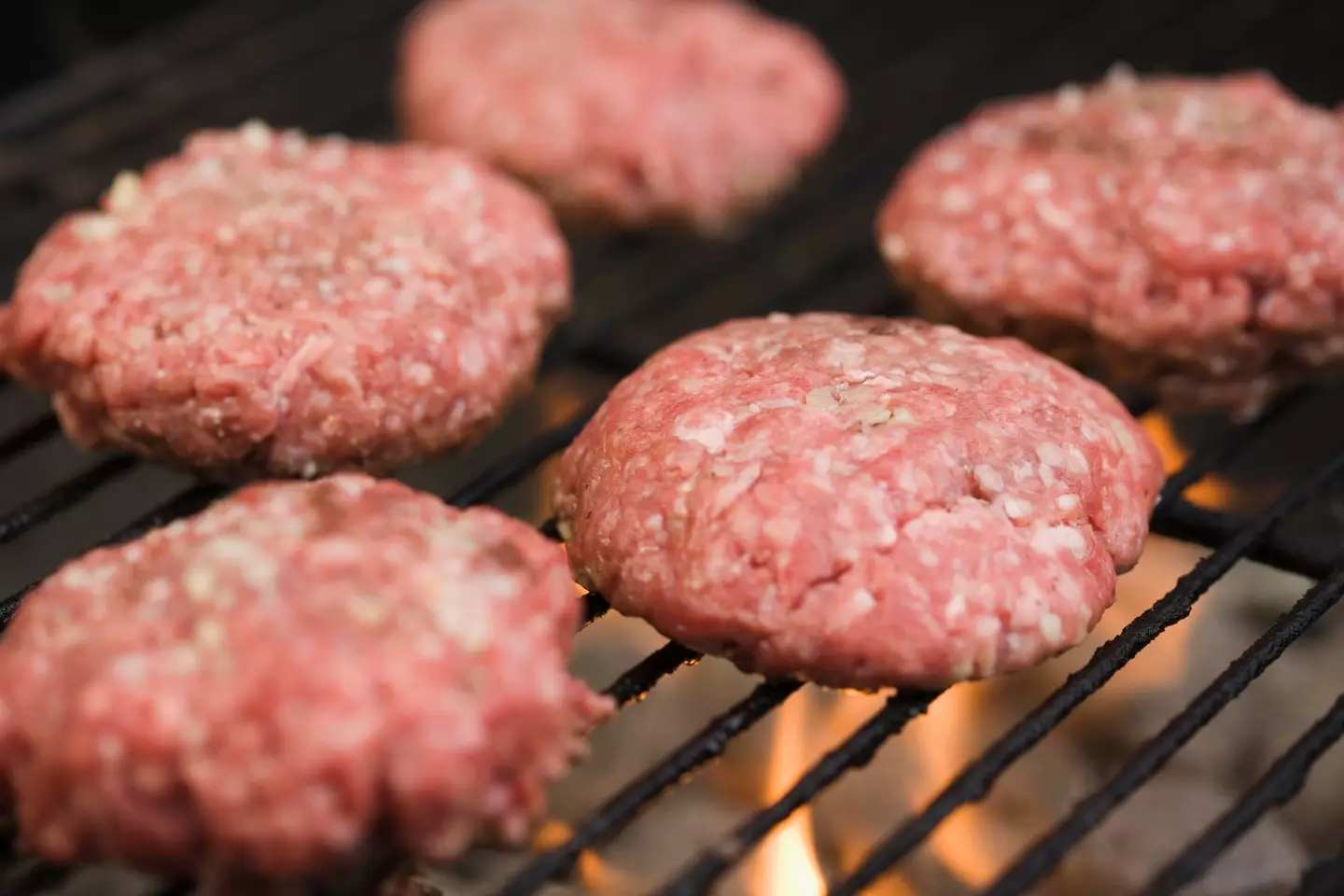
Beef eaters – as in people who eat beef, not the dudes standing guard outside Buckingham palace – commonly enjoy it when it’s a little on the raw side. This typically applies to steaks, where a rare or medium-rare order is all but the default, but some take it a step further by having their beef burgers come with some pinkness.
You might think that it’s fair game to eat a beef burger with a rare middle. After all, it’s the same meat as a steak, more or less, and as they’re made from minced meat there’s less likelihood of a tapeworm egg surviving for long enough to reach your guts.

That is, after all, the big risk with a rare steak. If an invasive little gastric parasite egg doesn’t get cooked along with the rest of the meat, it can set up shop in your intestines and wreak all kinds of havoc.
Advert
Undercooked meat may also contain bacteria that you’d rather not ingest, although there’s a reason why rare and medium-rare steaks tend to be safe on this front. We’ll get into that shortly.
In either case, you’re better off eating beef that’s cooked all the way through, but the risks may actually be greater if you go for a medium-rare burger compared with a medium-rare steak.
So, what do you need to know?
Undercooked minced beef can be dangerous
The US Department of Agriculture (USDA) has a helpful Q&A section designed for these kinds of quandaries, and it’s answered the question of ‘Is it dangerous to eat raw or undercooked ground beef?’ on our behalf.
Advert
“Yes, because raw and undercooked meat may contain harmful bacteria,” said the USDA.
“USDA recommends not eating or tasting raw or undercooked ground beef. To be sure all bacteria are destroyed, cook meat loaf, meatballs and hamburgers to a safe minimum internal temperature of 160 degrees F (71 degrees C).
It recommends using a specialised tool to make sure the meat has hit the required temperature, too: “Use a food thermometer to check that they have reached a safe internal temperature. If you are cooking thin patties, you can insert the probe of the thermometer at an angle, or sideways into the patties.”
Can pink minced beef ever be safe?
Now, you may thoroughly cook a beef patty and find that’s still a little pink in the middle. The answer might not be to stick it back in the pan, as the USDA notes that colour isn’t a reliable indicator of whether meat is properly cooked.
Advert
“Because doneness and safety cannot be judged by color, it is very important to use a food thermometer when cooking ground beef,” it said. “To be sure all harmful bacteria are destroyed, cook all ground beef products to an internal temperature of 160 °F (71 °C) throughout.”
It added that minced beef can indeed still have some pinkness even if it’s been properly cooked: “Ground beef can be pink inside after it is safely cooked. The pink color can be due to a reaction between the oven heat and myoglobin, which causes a red or pink color. It can also occur when vegetables containing nitrites are cooked along with the meat. “
Why are steaks safer to eat medium-rare than minced beef?
So, how come there’s one rule for minced beef and another for whole cuts of beef steak? Aren’t they essentially the same thing?
Advert
Well, that’s where you’d be wrong. The UK’s Food Standards Agency (FSA) has cleared up this particular question.
“Harmful bacteria can be carried on the surface of whole cuts of meat,” it explained on its government website. “When a rare steak is seared these bacteria are killed, making the steak safe to eat.
“When meat is minced to produce burgers, any harmful bacteria from the surface of the raw meat spread throughout the burger. Unless the burger is cooked right through, these bacteria can remain alive on the inside. This applies to all burgers, including burgers made from good quality or expensive meat.
.jpg)
Advert
“That's why a burger needs to be served well done, while a steak can be served rare.”
So there you have it: don’t be tempted to transfer your penchant for rare steak to your burgers. While we’re at it, do consider whether the rare steak is worth accidentally onboarding a stowaway worm. The risk is pretty low, especially in highly-regulated markets like the UK, but it’s worth bearing in mind all the same.
